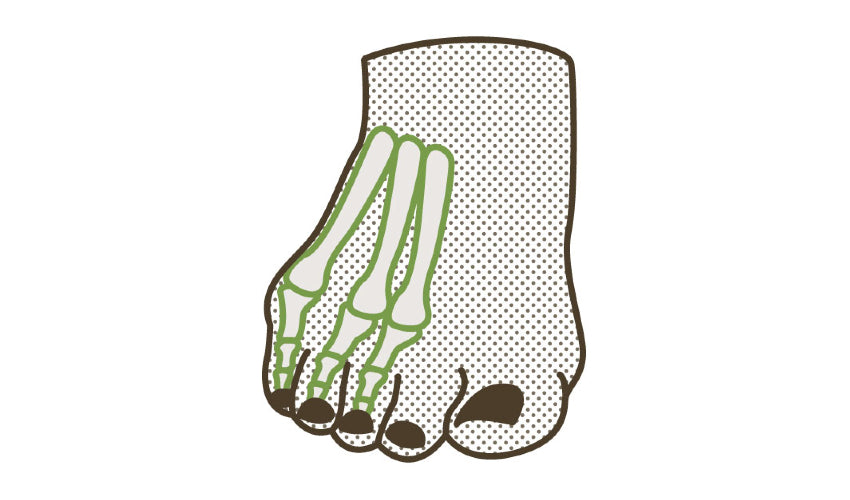
Definition
Bunionette: A bump or prominence on the fifth metatarsal bone, at the base of the little toe.
General Info
Bunionettes are less common than regular bunions (bumps or prominences that develop on the inside part of the base of the big toe), though they are similar to a true bunion in their appearance and symptoms. Bunionettes are often called tailor’s bunions because they frequently occur in tailors who sit cross-legged on hard surfaces for prolonged periods. The outside aspect of the feet, when sitting in this position, is subjected to excessive pressure, and constant rubbing of the area against the ground leads to the formation of a painful bump at the base of the fifth toe. Women who wear pointed-toe shoes or high heels are more likely to develop this condition, due to the extreme pressure on the outside part of the foot caused by fashion footwear.
Signs & Symptoms
Common signs and symptoms of bunionettes—in addition to the angular deformity at the fifth metatarsophalangeal joint—include:
Bunionette symptoms are often made worse by wearing shoes that possess tapering toe boxes, which rub against the prominence and irritate the soft tissues underneath the skin of the affected area.
Possible Causes
Inappropriate footwear is the leading cause of bunionettes in our society. The tapering toe boxes of most conventional shoes push the fifth toe toward the fourth toe, immobilizing the little toe in this deformed position. The fifth toe, when it is held in this position, is more susceptible to trauma from the shoe. Most shoes available to consumers today are not sufficiently wide for the average foot, especially in the toe box, or they have a non-expansile upper that fails to accommodate any sort of bony prominence.
Other possible causes of a bunionette include certain arthritic conditions, such as rheumatoid arthritis or psoriatic arthritis, that damage bone and lead to joint misalignment. Certain neuromuscular diseases may also cause a bunionette, due to the resulting imbalance in the muscles and tendons that act on the foot and the subsequent deformation of foot structure. Leg length discrepancies and foot trauma or surgery may also be causative factors for this condition. In some cases, a bunionette may be confused with a bone spur that arises on the side of the head of the fifth metatarsal bone.
Helpful Strategies
Most bunionettes can be treated conservatively by wearing shoes that allow the toes to splay the way nature intended. Choose foot-healthy shoes that possess a wide toe box and little or no heel elevation or toe spring. Other strategies or tools for treating bunionettes include:
-
Padding: Pads, especially bunionette pads, may help decrease any pain.
-
Anti-Inflammatory Agents: Certain dietary supplements may be helpful in reducing bunion-related inflammation.
-
Toe Spacers: A toe spacer, such as Correct Toes, places your fifth toe in its proper orientation; that is, aligned with the fifth metatarsal bone and splayed away from the fourth toe. When worn regularly over a period of time, Correct Toes can help eliminate a bunionette. When using Correct Toes, it’s extremely important to wear only footwear with a wide enough toe box to easily accommodate the device.
In certain advanced cases, a surgeon may remove a wedge of bone from the base or back of the fifth metatarsal. However, surgery for this foot problem is usually unnecessary. For most people, an effective and noninvasive first line of approach to treating bunionettes involves wearing men's or women's foot-healthy footwear and using Correct Toes toe spacers. Review all possible treatment options with a foot health professional before choosing surgery to correct a bunionette.

WANT TO IMPROVE YOUR FOOT HEALTH?
Let the team at Natural Footgear help you! Subscribe to our newsletter for the latest offers and helpful info, and sign up for our FREE email courses on various topics and foot health conditions.
Sign Up →
Want to Improve Your Foot Health?
We are here to help you every step of the way. Get our newsletter for the latest offers and helpful info, and sign up for our FREE email courses on various topics and conditions, including bunions, hammertoes, neuromas, plantar fasciosis, shin splints, ingrown toenails, and more.
Sign Up →
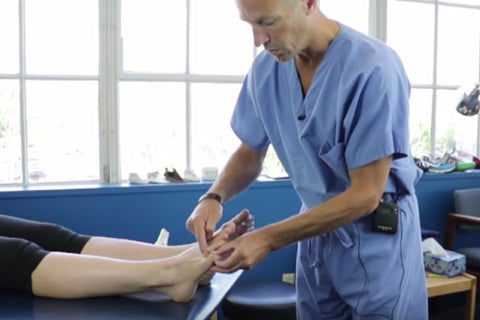 In this video, Dr. Ray McClanahan, a sports podiatrist at Northwest Foot and Ankle and the inventor of Correct Toes, discusses how bunionettes are treated using conventional and natural approaches. A bunionette, also known as a tailor's bunion, is a bump or prominence on the fifth metatarsal bone, at the base of the little toe. A bunionette is not a growth of bone, as is commonly believed; it is, instead,...
Read more
In this video, Dr. Ray McClanahan, a sports podiatrist at Northwest Foot and Ankle and the inventor of Correct Toes, discusses how bunionettes are treated using conventional and natural approaches. A bunionette, also known as a tailor's bunion, is a bump or prominence on the fifth metatarsal bone, at the base of the little toe. A bunionette is not a growth of bone, as is commonly believed; it is, instead,...
Read more



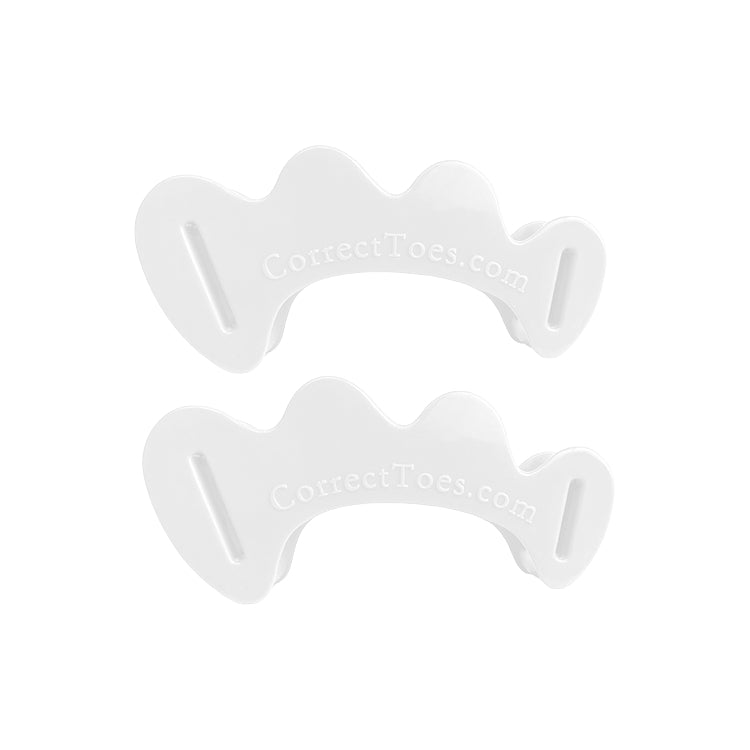
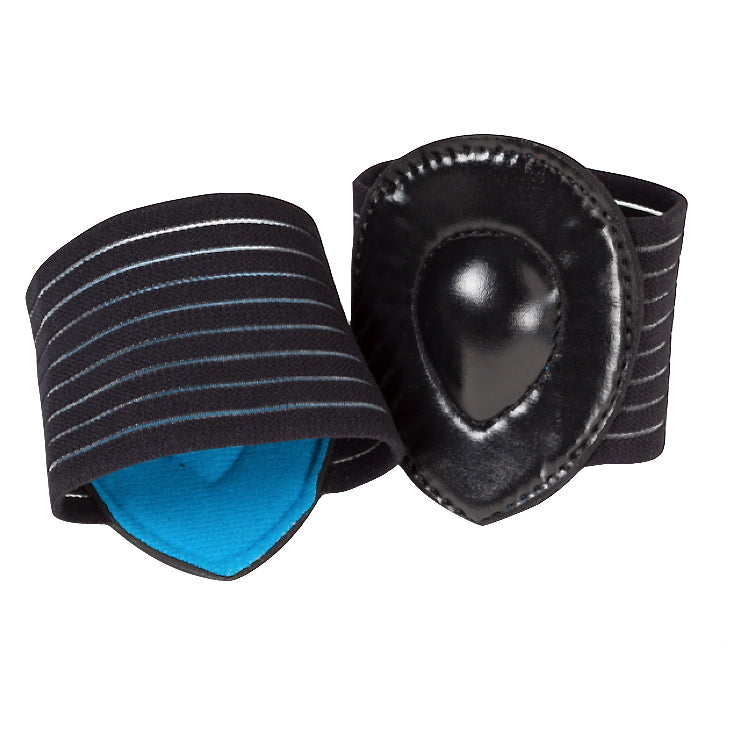
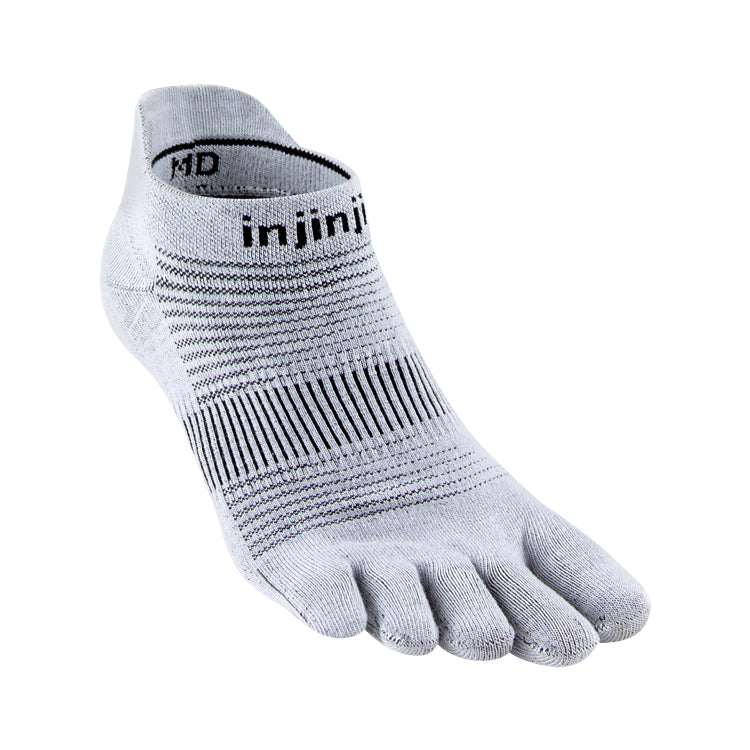
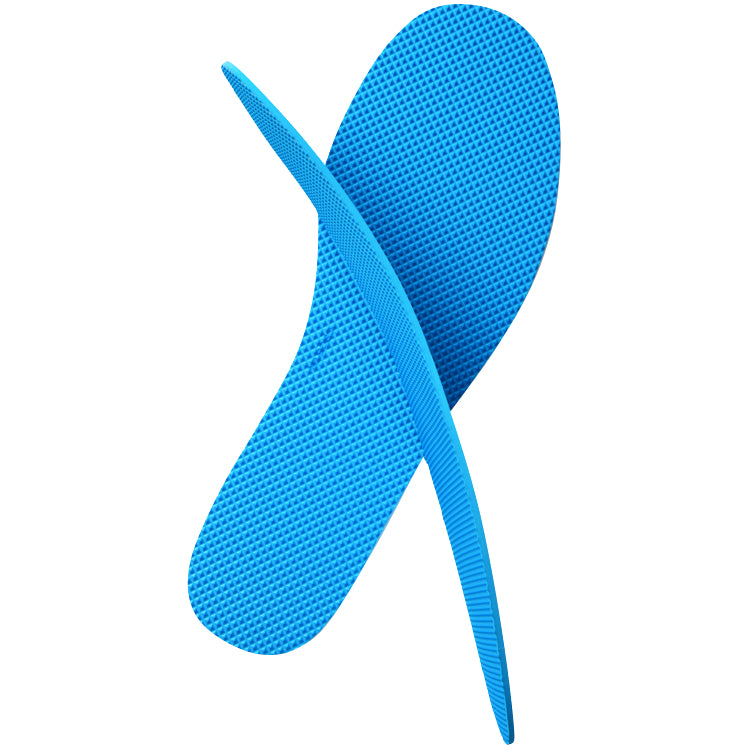

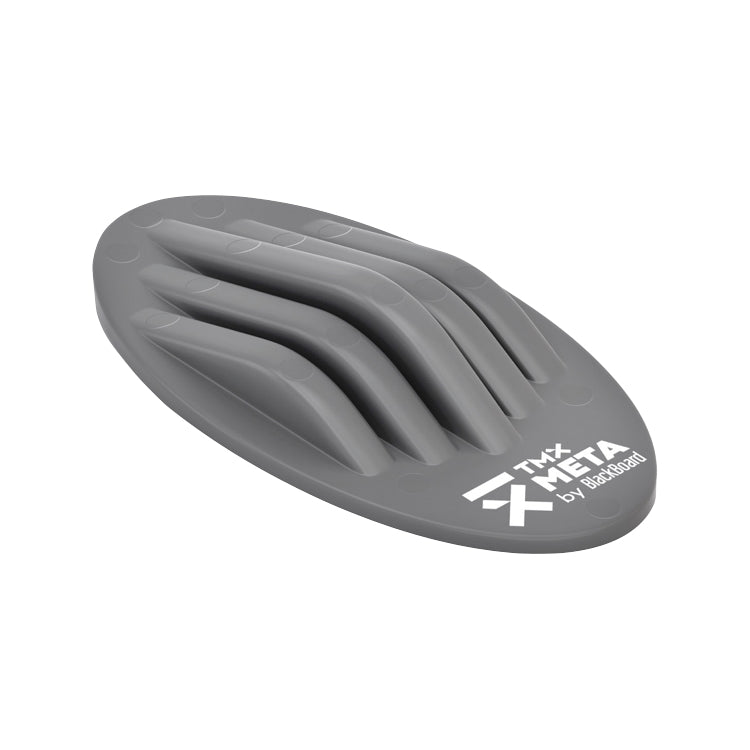
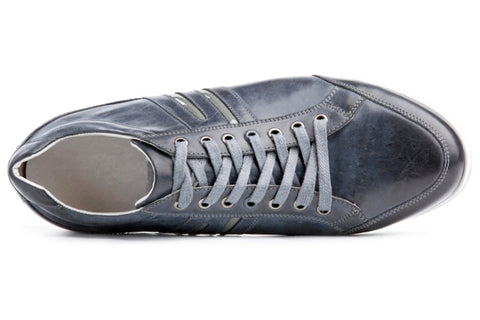
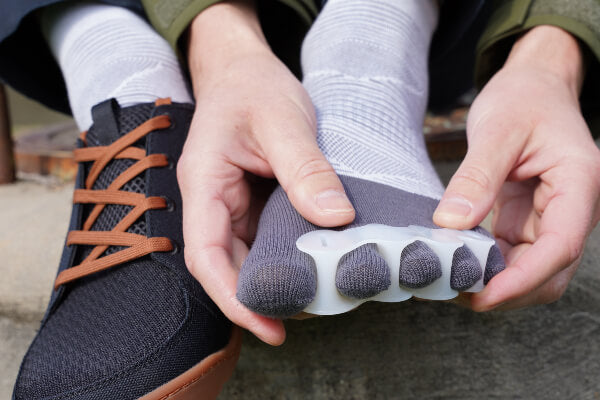
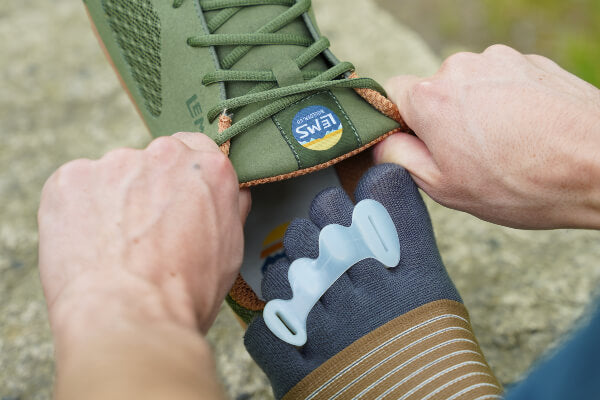
How long does it take to fix a tailor’s bunion with Correct Toes, on average?
Hi, Jimmy,
Thank you for your comment. Everyone’s feet are different, and depending on the severity of the bunion, as well as other factors (like how much time you spend in conventional footwear), the timetable for rehabilitation can vary.
We can’t give a definitive timetable, but we would recommend wearing foot-healthy footwear (www.naturalfootgear.com/collections/mens-shoes) in combination with Correct Toes if you’re hoping to see progress as quickly as possible. Correct Toes toe spacers are an excellent corrective tool on their own, but they have the greatest corrective effect when they are worn inside appropriately wide toe box footwear during weight-bearing activities (e.g., standing, walking, running, etc.).
I hope this info helps! If you have any further questions about the footwear we offer, or if you have additional questions about tailor’s bunions, please do let us know!
Kind regards,
Andrew Potter
Thank you for this post! I struggle to find much about bunionettes online. I have had them since I was a teenager, and I really struggle to find any shoes that will fit my feet (if they are wide enough for my bunionettes, then they are too big at the heel, and my foot slips around). I wear orthotics, but every time I’m reassessed by the podiatrist, they are adjusted to be higher and higher with ever-greater arch support, meaning my foot slips out of a lot of shoes! It’s a constant struggle and a source of discomfort, and I have recently noticed bunions forming as well, so I have decided to try barefoot shoes. Even these are snug on my bunionette, so I’m wondering if this would hinder any progress? I have seen that barefoot shoes are great for reversing bunions, but would you say the same about reversing bunionettes? Thank you so much!
Hi, Maeve,
Thank you for sharing your experience with bunionettes. It’s great that you’re exploring minimalist shoes as an option, as they can help reduce pressure on the toes and may indeed assist with halting your bunionette (and bunion) progression. I’d be curious to know which brands and models of minimalist shoes you’re using, as not all minimalist shoes are equal when it comes to toe box shape, width, and roominess. Some of the most accommodating footwear for both bunions and bunionettes comes from companies like Lems, Xero, Ahinsa, and Altra (among many other options). Of course, adopting footgear like Injinji toe socks and Correct Toes toe spacers is also an important part of addressing bunionettes, and the aforementioned footwear brands usually work quite well in combination with these products.
Please let us know if you have any follow-up questions or comments! We’re happy to help however we can.
Kind regards,
Robyn Hughes, ND